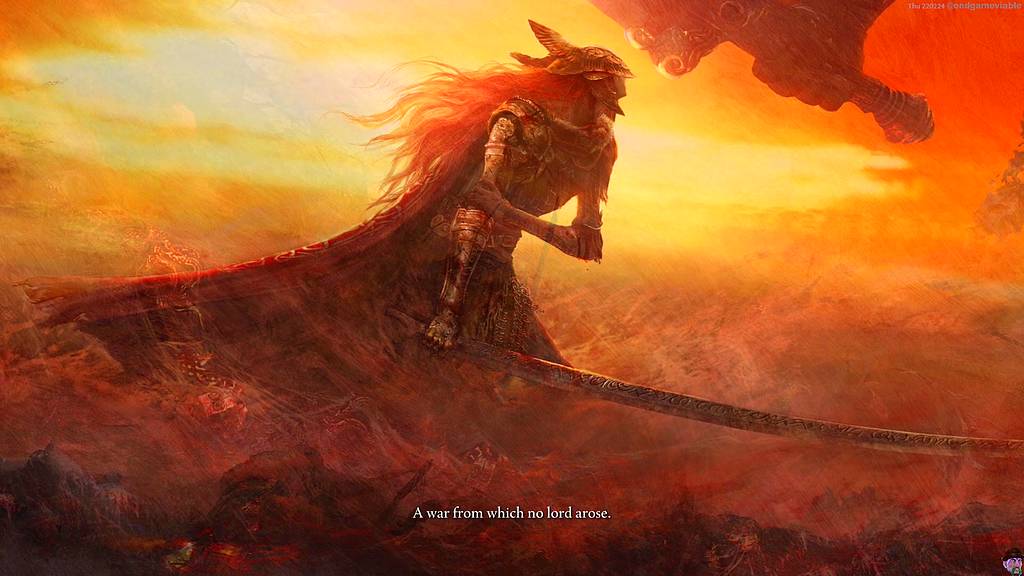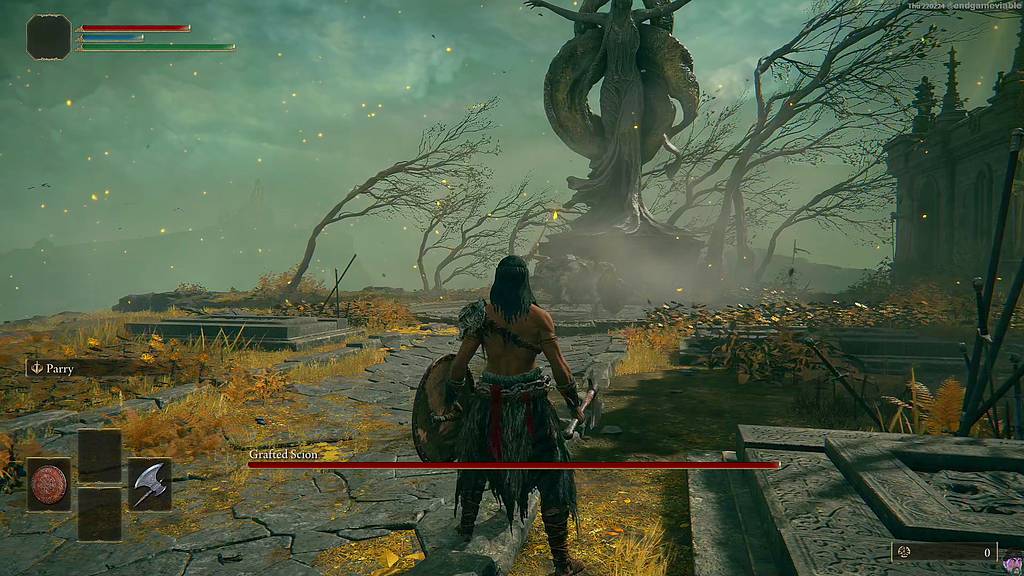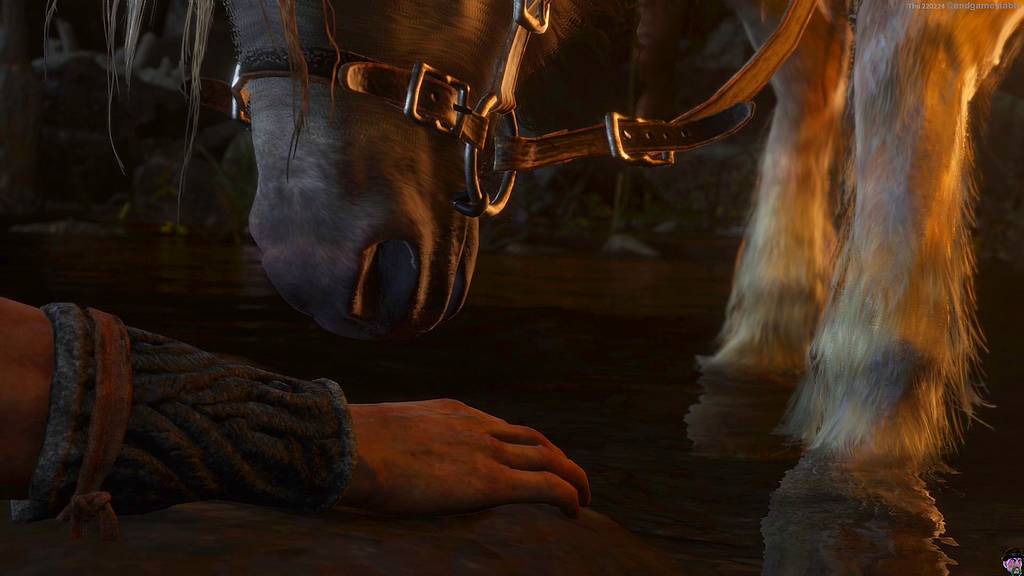Elden Ring - The Journey, Part 1
1,698 words.

A small window into what it feels like to enjoy playing Elden Ring as it was intended the way I like playing it. [ED: I shouldn’t assume.]
I looked around and noticed that what’s missing from the blogosphere is a narrative perspective that ignores all the b.s. “controversies” and highlights why voluntarily subjecting oneself to the difficult learning curve of a Souls game is fun for the players for which this game was intended.
Elden Ring. It’s finally here. The next game from From Software, the first since Sekiro in 2019, which was a minor disappointment, which followed Dark Souls 3 in 2016, which was a smash hit success that got everything exactly, impossibly, perfectly right.
I pre-ordered it on Monday, some four days before launch. I splurged and got the Collector’s Edition, even though there really isn’t much in there I particularly needed or wanted, except maybe the soundtrack. It’s the first time I’ve pre-ordered a game since … Dark Souls 3 in 2016. It’s the first time I’ve bought a Collector’s Edition since … Dark Souls 3 in 2016. From Software has enough of a track record with me that I’ll buy all of their games on launch day sight unseen for the foreseeable future, one of the only game developers that has such a privileged status with me.
Flashback: I first played the Dark Souls Prepare To Die PC Edition from Steam around 2014. I played with mouse and keyboard. I started with a Sorcerer class. I hated it. I absolutely loathed it. It was a steaming pile of hot garbage. I got to the Bell Gargoyles and quit because that boss fight was absurd.

When I load Elden Ring, the game looks startlingly similar to Dark Souls 3, in terms of title screen appearance. It’s a very austere, unassuming title screen consisting mainly of text that isn’t going to impress anyone. I didn’t expect that. I figured by now they might have gotten a little flashier or changed something. And in my head I imagined Elden Ring would be a significant departure from previous games, yet it looked very similar right away. It worried me. Still, it’s their “brand” and it’s worked so far.
I start out using an Xbox One controller and I pick the Hero class. It looks like a Strength-based melee build, the kind of character that you usually see wielding massive two-handed clubs killing things in one hit. It isn’t what I normally play. I gravitate toward what they call a “Quality” build, which is a mix of Strength and Dexterity so you can pick up and use just about any weapon. It’s not a specialized min-max build, it’s more of a jack-of-all-trades, master of none class, which is what I prefer, at least to start out. I thought I’d change things up this time and try something different. It might make for some interesting drama on the videos I’m recording, as I learn a new combat style.
I’m not terribly impressed by the opening introductory cut scene which sets the stage. It’s basically just a slideshow of concept art. It’s not as good as some of the Dark Souls introductions. It seems ordinary, even formulaic. The same script as previous games, just with different names and places substituted in. The main difference is that it sounds closer to regular heroic fantasy than dark fantasy. But they aren’t trying to deviate too much from what worked before.
The one image that does stand out to me is the image of Queen Marika the Eternal (whoever that is) in a crucifixion pose. It’s a striking visual that I will find out recurs frequently in the game.

I start in a small room which reminds me of Bloodborne for some reason. The number of player ghosts and dumb player messages is absurd. At the very least, I think From Software needs to stop doing the player message mechanic. It was an interesting “asynchronous multiplayer” mechanic at first, and would be amazing if Internet guides didn’t exist, but now it’s just silly.
After looking around the first room a bit and getting oriented with the controls–they’re the same as Dark Souls, except curiously the two-hand button has now been replaced by a dedicated jump button, something that will not-so-subtly change a lot of what I’ve previously learned about Souls controls, which will no doubt confound my muscle memory for quite some time–I walk down some stairs and enter an open area that immediately sets off alarm bells.
Sure enough, a big loathsome creature drops down out of the sky before me and a red health bar appears at the bottom of the screen: It’s a boss fight, the standard “tutorial boss fight” that’s in every From Software game. This one is called the Grafted Scion.

In 2014, when I first played the Dark Souls Prepare to Die PC Edition for the first time, the Asylum Demon tutorial boss was a shock. “You want me to beat this massive thing right after I spawned into the game with no weapons? Not knowing the first thing about how to fight? No wonder everyone says Dark Souls is so hard!” Everybody says that the first time. We Souls veterans think fondly upon that time in our lives, the start of our journey, when everything was new and exciting.
In 2022, after playing all the Souls games, a tutorial boss is as surprising as the sun rising every morning. I can tell almost immediately that I’m not supposed to win this fight. I can barely damage the Grafted Scion, and it has a lot of attacks that do a lot of damage that I can’t block, and I don’t have any healing capability. I’m aware that it would give me extraordinary bragging rights to be able to say I beat the Grafted Scion on the first try right out of the gate (on video!), but I die fairly quickly, and I’m not at all surprised to see a cut scene which confirms dying was the expected path to take, just like Demon’s Souls and Bloodborne and Sekiro, and I wake up underground in the Cave of Knowledge.
Flashback: In 2015, I played The Witcher 3. I loved that game. In particular, I enjoyed the action combat which had real consequences for failure (I played on Normal). I realized something: The Witcher 3 combat reminded me of Dark Souls, except that I was playing The Witcher 3 with a controller. I wondered if that might make a difference with Dark Souls.

The cut scene upon waking makes little sense, but that’s not surprising either. True to the From Software formula (except Sekiro, which was unusually narrative-focused), presumably the story elements will only make sense after putting together disparate puzzle pieces throughout the game, or on second and subsequently playthroughs, or after consulting a wiki sometime later. There’s a horse and a woman who’s interested in helping us, that’s all I get out of it.
There’s a ghost sitting in a chair nearby, who tells us to jump down into a shallow chasm to train. I surmise this is the direction we should go if we want to learn more about the basic controls of the game. This is new for a Souls game– normally, the only tutorials you get are in the form of messages on the ground. There’s also a big door nearby that I imagine will lead out into the game world.
I don’t feel like I need a lot of training (I just finished the Demon’s Souls remake after all) but I jump down into the tutorial chasm anyway. I’m here to look at everything in this game, not speed run through it as fast as possible.

It’s a tutorial, so there’s not much to say about it. I learn that “bonfires” are now called “Lost Graces,” which is a really strange term that I’ll never learn and I’ll always call them “bonfires” anyway. I learn how to attack and dodge and jump and block, all things I already knew how to do. At the end, there’s another tutorial boss: The Soldier of Godrick. This guy presents no challenge to me whatsoever [it has attack patterns that are similar to other enemies seen frequently in Souls games], and I demolished half his health with one backstab, something you normally can’t do in boss fights.
The end of the tutorial deposits me back where I started, and I walk out the main door, ride up an elevator, and enter the world of Limgrave.
Up to this point, Elden Ring has been a very standard From Software game. At this moment, everything changes.

Flashback: After a considerable hassle, I managed to get a controller working with the Dark Souls Prepare to Die PC Edition. (For some reason I can’t remember, it was a hassle back then.) I played a Knight instead of a Sorcerer. The experience was a thousand times better. I got to the Bell Gargoyles again and struggled for quite a while with my fat-rolling tank of a character, but I studied and learned the Gargoyle moves and how to block them, made progress, upgraded my battle axe once or twice, and some twenty-something tries later I finally beat them, and the village rejoiced, and I proudly rung the first bell just like everyone else. I was hooked on the From Software game formula: An extremely rare video game that is intrinsically rewarding to play, like chess or tennis, not just rewarding in terms of gifts. It was the only game I’d ever seen that reminded me of a very old TRS-80 game called Dungeons of Daggorath, the only game which recreated that feeling of continuous tension, an Olympics-style thrill of victory and agony of defeat, in an RPG-style dungeon crawling format.
(Just FYI on the off chance of spoilers it’s likely that I won’t read any comments on this post very closely until after I’m finished playing the game.)
UPDATE: Updated some grammar and made some clarifications so I don’t sound so much like a jerk. The whole point of this is to talk about Elden Ring without sounding like a jerk.
Sorry, new comments are disabled on older posts. This helps reduce spam. Active commenting almost always occurs within a day or two of new posts.